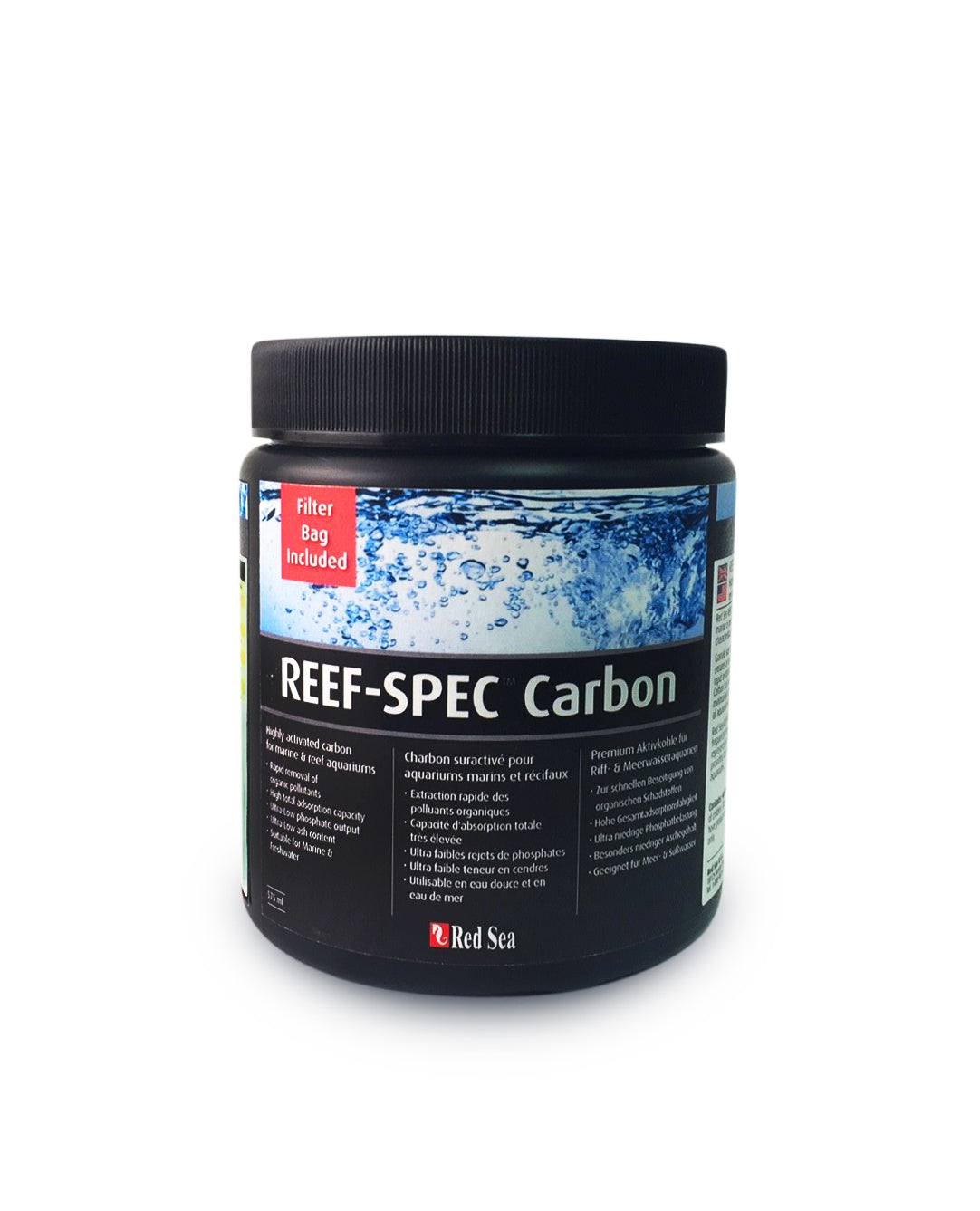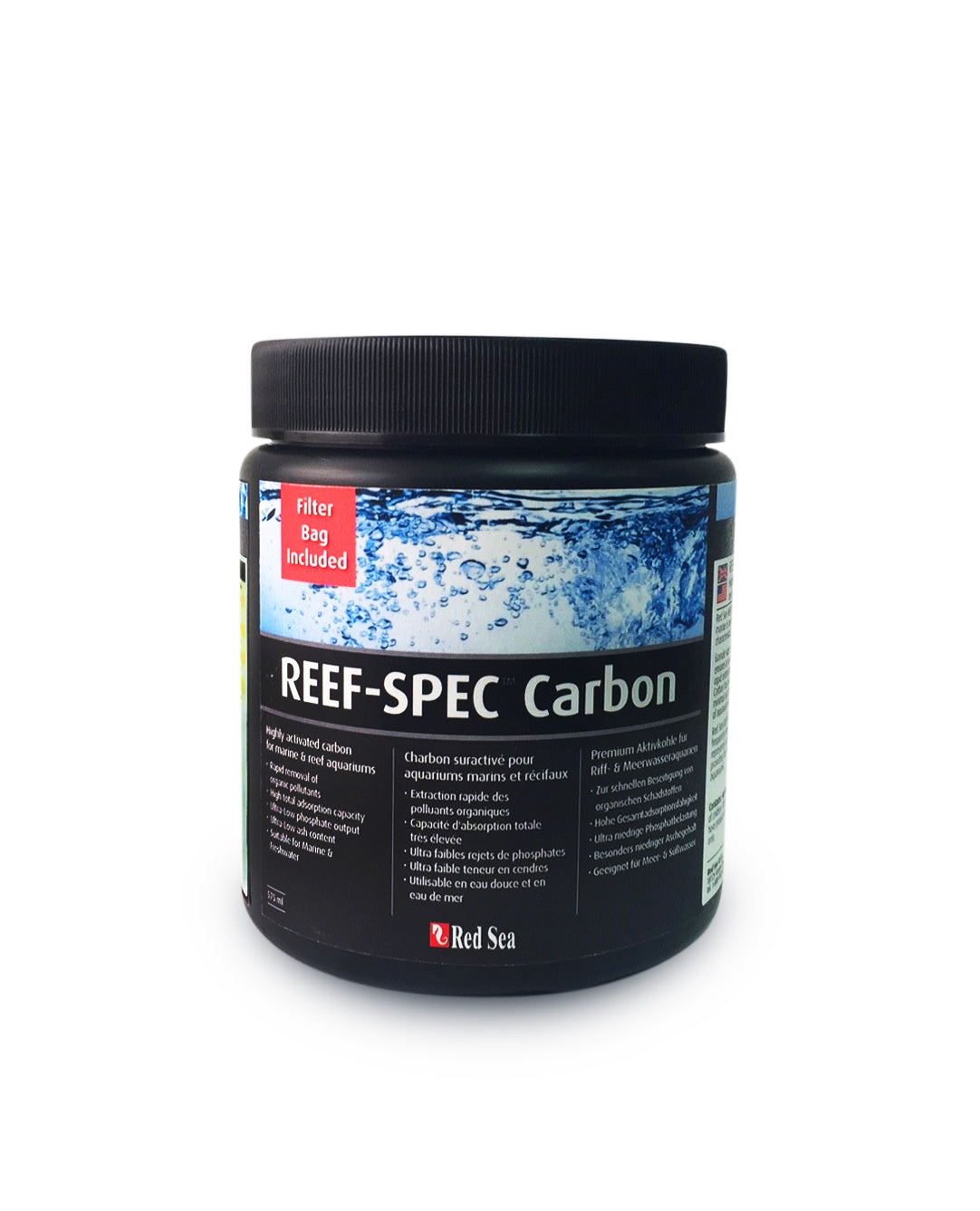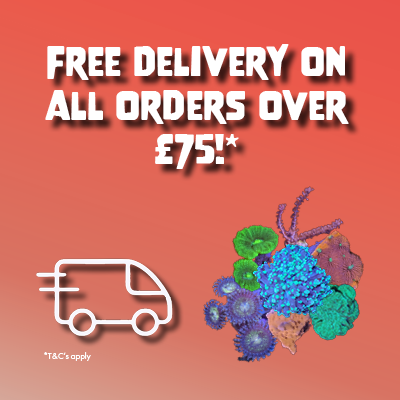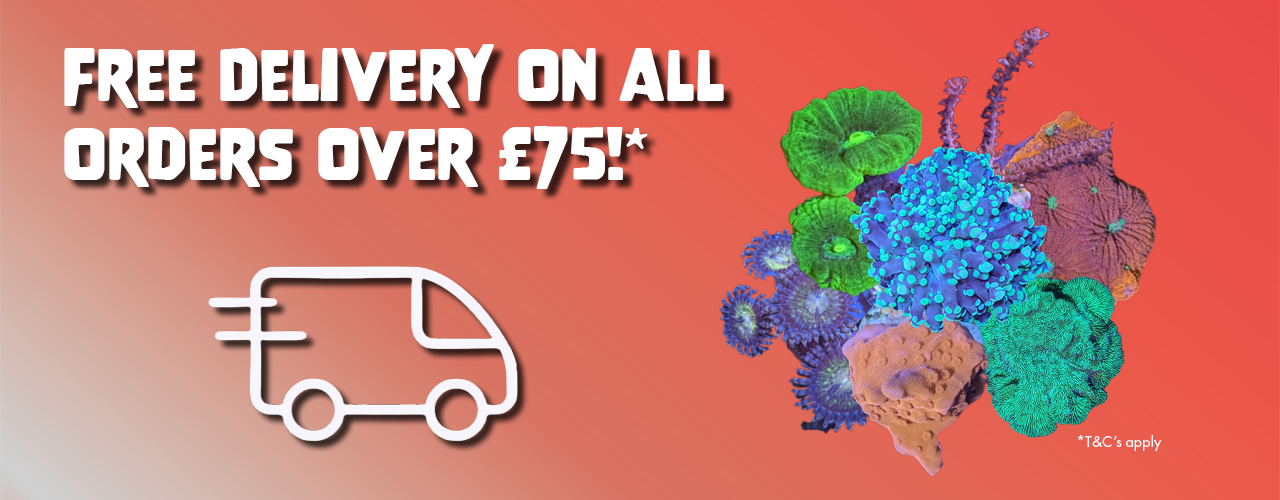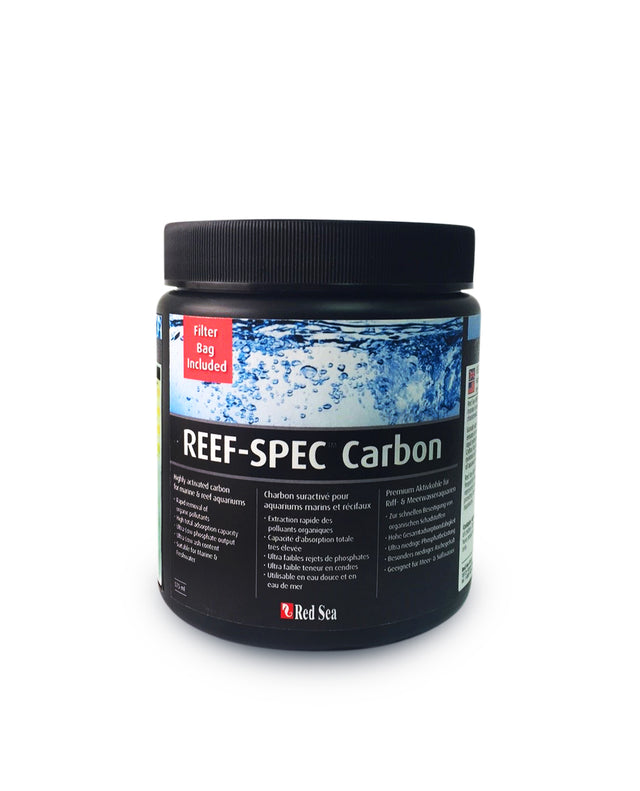Description
Description
Red Sea REEF-SPEC™ Carbon is the ultimate choice for marine & reef aquariums due to its unique technical characteristics.
Red Sea REEF-SPEC™ Carbon’s granule size and its micro/macroporous structure, ensures a very high total adsorption capacity and rapid extraction of the specific organic pollutants that are found in Reef aquariums.REEF-SPEC™ Carbon has extremely low phosphate leaching and minimal ash content while also not affecting the pH of aquarium water.
Red Sea REEF-SPEC™ Carbon needs replacing less frequently than carbons that are not reef-specific or are of lower quality and represents an effective, cost-efficient solution for providing the very best water quality in marine & reef aquariums.
Main features:
- Rapid removal of organic pollutants
- High total adsorption capacity
- Ultra-Low phosphate output
- Ultra-Low ash content
- Suitable for Marine & Freshwater
- Filter Bag included
Specification:
- Shape - 0.6-2.3 mm flakes
- Density - 0.48 g/ml
- Pore Volume (PV) - 1.04 ml/g
- Total Surface Area (TSA) - 1000m2/g
- TSA/PV - 990m2/ml
- Small organic molecules adsorption - 1000mg/g
- Large organic molecules adsorption - 280mg/g
- pH in distilled water - 8
- Phosphate output - 0.000001g/ml
Why do we need to use carbon in a reef aquarium?
There are organic pollutants that can only be removed from reef aquarium water by active carbon. The reef aquarium is a closed artificial ecosystem where living creatures continually produce organic waste consisting of proteins, fats, carbohydrates, organic acids and phenols. If allowed to decompose the organics will fuel the activity of many unwanted microorganisms in the aquarium, increasing the total oxygen demand (BOD, COD) which will cause a reduction in Redox potential, as well as causing excessive production of CO2 by bacterial respiration, which will reduce pH. Furthermore, there will be an increase in nitrogenous and phosphorus compounds, encouraging the growth of nuisance bacteria and eventually of nuisance algae. The accumulating organics also has a significant effect on light penetration, especially in the blue and near UV spectrum that stimulates coral growth. Stripping out the organics from the water is therefore crucial for the success of the aquarium. Using strong protein skimming, fine mechanical filtration and healthy biological filtration (nitrification and de-nitrification) will treat the large organic particles and the end products of the organic decomposition processes. However, there are many small organic particles that can only be treated by very fine mechanical micro-filtration using activated carbon.
How does activated carbon filter water?
Scientifically speaking, the carbon removes the organics from water by a physical process called adsorption. Within a reef aquarium, the submicroscopic pores of activated carbon are the final stage of the mechanical filtration process, adsorbing the organic molecules that are too small to be removed by even the finest mechanical filters or physically removed from the water by protein skimming. Adsorption can be thought of as the adhesion of a molecule to a surface by attractive forces. This occurs within the submicroscopic pores of the carbon because the attractive forces between the organic molecules and the internal surfaces of the carbon are far greater than the attractive forces that keep them dissolved in solution. This will continue until all of the surface areas inside the carbon is used up and becomes saturated with organics.
What is activated carbon?
Activated carbon is an extremely porous material with a sponge-like structure but with a very large internal surface area relative to its physical size. It is produced from many organic materials that have a high carbon content such as coconuts shells, nutshells, lignite, bituminous coal or anthracite. The carbon-based material is “activated” through physical modification and thermal decomposition in a furnace, under a controlled atmosphere and temperature. The activation process significantly increases the surface area per unit volume of a fine network of submicroscopic pores which is what gives activated carbon its ability to act as a filter material. The specific source of the carbon and the specific activation process determines the physical characteristics of the finished product. There are many different grades of activated carbon and therefore they must be selected specifically for each and every application.
What makes a specific carbon ideal for reef aquariums usage?
There are a number of internationally accepted tests for evaluating and comparing activated carbon. However, the most significant parameters for selecting a carbon for reef aquariums are the Iodine Number and Methylene Blue Number. These two parameters measure the ability of the carbon to adsorb all of the organic waste from a reef aquarium that is not removed by mechanical filtration and protein skimming. The higher the number the more organics will be removed from the aquarium per gram of active carbon used. Both of these numbers are about as important as each other and should always be considered together when evaluating test data. Some manufacturers quote a Molasses number, however, the molecules in the molasses size range are typically removed by protein skimming and therefore this number is irrelevant when evaluating the suitability of activated carbon for reef aquariums. In the past, carbons have been known to leach phosphate into the water, which is undesirable for a reef aquarium and therefore the lowest levels of Leachable Phosphate are considered better. In reality, as long as the leachable phosphate is below a basic threshold level, any differences below that level are not measurable in reef aquariums and are therefore irrelevant. The cleanliness or dustiness of the product is also a consideration and is measured as the Ash Level. The lower the better as higher levels indicate a larger quantity of particles will be released to the water and a lower actual mass of carbon left to do the filtration. Ash levels are often quoted by manufacturers however it is easiest visualized by viewing the turbidity on adding the carbon to water. In addition to these important indicators, the overall efficiency of the activated carbon will be affected by its physical parameters such as Product Density, TSA, Pore Volume and Mesh Size. Activated carbon produced from lignite and anthracite is not recommended for reef aquariums due to an excessive amount of fine powder released into the water (which may lead to lateral line necrosis “HLLE disease” in some fish). Coconut shells or bituminous coal is the preferred sources.
- Remove any fines, by rinsing carbon under tap water.
- Due to air trapped in the pores carbon will float and therefore it is recommended to soak the carbon in RO water until all of the air has been released.
- Place the carbon in a location with an active flow of 1000-1500 lph (250-400 gph) per 50 gr carbon.
- Replace carbon every 1.5 – 2 months. Note: When carbon becomes saturated with organics, it may start adsorbing some of the trace elements from the seawater.
Usage Guide
Weight - 250g
Payment & Security
Payment methods
Your payment information is processed securely. We do not store credit card details nor have access to your credit card information.

